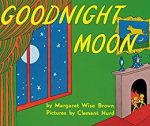I am impressed with this detailed dissection of the recent collapse of the Romance Writers of America. Not only does it cover all the bases, it reveals a lot of the blatant racism in this country. One thing that surprised me is that the RWA was founded by a black woman, yet there were all these policies put in place that made sure black authors were handicapped in the struggle to succeed. Like this:
This discovery grew into a widespread Twitter discussion about the important institutional role that Grimshaw had played as the romance buyer for Borders, at a time when Borders commonly shelved all African American authors in a separate section together, away from specific genres, like romance. It raised questions about how she’d made her decisions in such an important gatekeeping role, and whether she had given African American writers a fair shot at prominent placement. (Though, to be clear, the policy was the case across Borders—not just in romance.) Milan weighed in, but she was far from the only participant.
Wait, what? Black authors were segregated in bookstores? This is very white of me to admit, but I didn’t have the slightest idea, yet for years they had this discriminatory policy in place. Were they afraid some delicate white lady might accidentally buy a novel that had two black people falling in love? Let’s not even discuss the possibility that she might pick up something with queer characters in it.
These are practices that I would have thought a writer’s organization would have been at the forefront of challenging, but no, they just simmered for decades because they had an unwritten policy of only saying nice things about romance books. They refused to recognize the conflicts, suppressed all complaints, kept everything tightly bound up, until there was no other option but a messy, damaging cataclysm that has all but destroyed the organization.
There’s a lesson there for all of us, even if you aren’t a romance novel fan.









